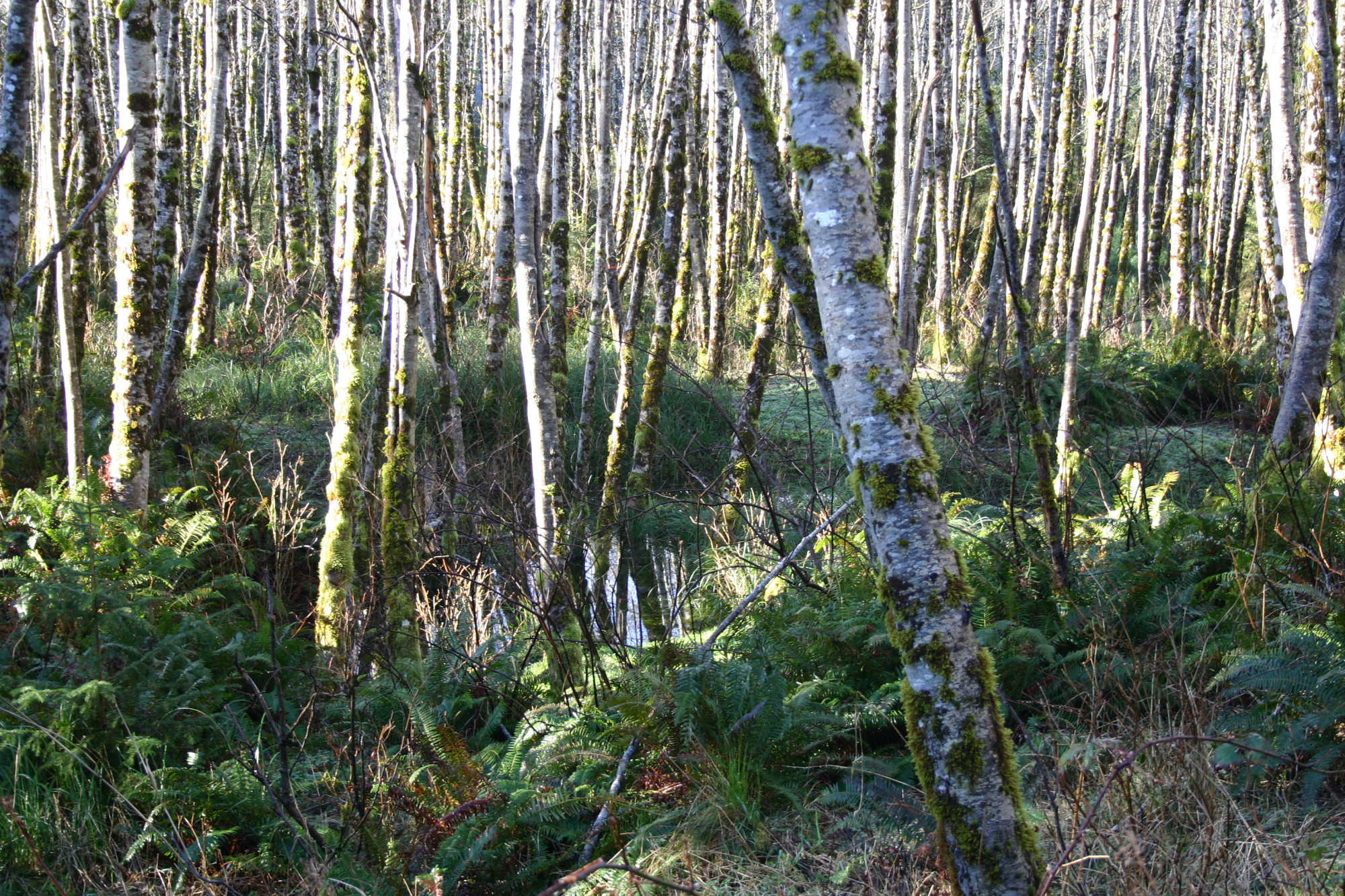
-
Arch Cape Area Wetlands
Clatsop County is a place of many waters and many wetlands. It rains quite a bit, and the County is blessed with many streams, creeks, sloughs, lakes, wetlands and marshy areas. However, the County has not been so fortunate in its efforts to protect these areas. Wetlands especially are critically important for flood control and wildlife habitat, and salmon habitat as well, when they are part of a stream or estuarine complex.
In general, Clatsop County ordinances have required a 35 or 50 ft. setback “from the line of non-aquatic vegetation,” with many specific zones repeating this requirement. Unfortunately, the term “non-aquatic vegetation” appears not to ever have been defined, either in the Comprehensive Plan or in the zoning ordinances. The definitions of “aquatic areas” included only wetlands, sloughs, streams and wetlands within the shorelands area boundary. Clatsop County thought that its definition covered wetlands outside the Coastal Shorelands area, but apparently this is not so, as a Memo from County Counsel clarified.
For many years, Clatsop County protected wetlands in the northern part of the County through its Lake and Wetland Zone, which covers coastal and non-coastal lakes, significant freshwater marshes and upland habitat. Development is generally restricted to restoration, low intensity recreation, small docks, low intensity agriculture and maintenance of existing structures. However this zone, due mainly to lack of funding for additional wetland inventories, has been applied only to the northern and central parts of Clatsop County.
This has left the wetlands of south Clatsop County, especially in Arch Cape and Cove Beach, vulnerable to development. As there are few estuaries in south County, wetlands outside the Coastal Shorelands boundary, such as those east of Highway 101 in the Arch Cape area, are not protected. Furthermore, south County wetlands are often fragmented as a result of existing rural residential housing, as well as subdivision plats with lots sold though not yet built.
Recognizing their wetlands were poorly protected, local sewer and water districts and residents of the Arch Cape area funded and completed a Local Wetland Inventory (LWI), to supplement and partly replace the much broader scale National Wetlands Inventory. The purpose of the LWI was to map and clarify the significant wetlands in the region for protection. The Department of State Lands has approved the LWI, but Clatsop County has not thus far adopted it. As a result, the LWI has no power to trigger Clatsop County wetlands protections. Meantime, development pressures continue to escalate in the Arch Cape area, and the already-fragmented wetlands continue to suffer, having no protections at all unless inside the Coastal Shorelands boundary, which most are not.
Thus far Clatsop County has not adopted a Safe Harbor provision as allowed under state law, which provides a “bright line” 50 ft. setback for buildings from any significant wetland or riparian zone. Under pressure from two appeals of County-granted variances to its own setback standard for wetlands in Arch Cape, the County realized it had been misinterpreting its own ordinances. It was also clear that the Arch Cape-area significant wetlands were vulnerable to development, despite their being essential for flood control in this rainy, steep area of the coast.
A County wetlands workshop in December 2014 focused on protection options. It led to recommending formation of a committee to look at the problem in more depth. The goal is to identify solutions that will protect wetlands County-wide, thus allowing them to provide their essential flood control and salmon habitat benefits. The committee’s task is complex, and it may take some time to work through the alternatives, additional mapping needs, and necessary ordinance revisions. ORCA is collaborating with local residents to make sure a protection policy is put in place that will protect Clatsop County’s significant wetlands and riparian areas, including those of the Arch Cape/Cove Beach area, and hopefully clarify the County’s ordinances and definitions surrounding wetland protection. Simply clearing up the confusion would be an enormous help as residents and the County move to grapple with this issue.
DOCUMENTS:
